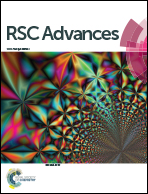Effect of ethylenediamine on CMP performance of ruthenium in H2O2-based slurries
Abstract
With the aggressive scaling of integrated circuits, ruthenium has been proposed as the next generation barrier material to replace the conventional bilayer of tantalum and tantalum nitride due to its properties such as allowing direct copper electrodeposition. In this work, the effect of ethylenediamine (EDA) on the chemical mechanical polishing (CMP) properties of ruthenium in H2O2-based slurries was investigated. The results show that EDA or H2O2 alone has little effect, but the combined use of EDA and H2O2 significantly enhances the removal rate of ruthenium. Subsequently, the mechanism of action of ruthenium removal promoted by EDA was studied by combining CMP experiments, electrochemical experiments and surface chemical characterization methods. It is indicated that EDA molecules react with ruthenium oxide (not ruthenium metal) to generate a large number of complexes, which promotes the dissolution of ruthenium oxides and the corrosion of ruthenium. More importantly, the oxide layers on the ruthenium surface become rough and porous, and can be easily removed by mechanical action during the ruthenium CMP process. Meanwhile, the use of EDA can reduce the electrostatic repulsive force between the SiO2 particles and ruthenium surface in the CMP process, thus further accelerating the ruthenium removal. In order to obtain an adequate removal rate selectivity of ruthenium versus copper, the corrosion inhibitors for copper were added. As a consequence, the removal rate selectivity of 1.13 : 1 was obtained, while also reducing the corrosion potential difference between ruthenium and copper to 17 mV.



 Please wait while we load your content...
Please wait while we load your content...